As a changing climate forces glaciers to retreat in northern British Columbia and Southeast Alaska, new stretches of river are appearing, and wild, wandering salmon are finding and using this unveiled habitat, a new study finds. And, researchers say, as climate change continues to shrink glaciers, more of this “new” habitat will be exposed and available to Pacific salmon. But, don’t get too excited. Salmon aren’t the only beneficiaries of these newly exposed and soon-to-be free-flowing watersheds.
Researchers from two universities and two indigenous first nations say mining companies are showing interest in the now or soon-to-be-ice-free landscape that, in many instances, has high potential for mineral recovery. In fact, adjacent to or very near some of the newly free-flowing rivers are active mining claims.
And, the study finds, “mining companies are staking claims on future salmon habitats as glaciers retreat.” In other words, they’re staking mining claims minerals that are still under the ice, and betting that climate change will one day give them access to commodities like gold, silver, lead, nickel and copper, among other metals.
The lead author of the study is Jonathan Moore of Simon Fraser University. Moore was joined in the study by researchers from the Gitanyow First Nation Hereditary Chiefs, the Taku River Tlinget First Nation and the University of Montana Flathead Lake Biological Station.
The long game from mining interests
Is it an environmental issue? Or is it a policy matter? According Moore, who published the study in the journal Science in November, it’s both.
“Mining companies are looking to retreating glaciers for newly exposed mineral deposits,” the study reads. “This proglacial mining is a global pressure, from Greenland to Kyrgyzstan to western Canada. Yet environmental and mining policies might fail to consider the future ecological value and capacity of emerging habitats.”
There’s no shortage of irony.
“Climate change and other human activities are harming salmon populations in much of their range,” Moore says. “Yet in some locations of northern B.C. and Alaska, glacier retreat is creating hotspots of opportunity for salmon, but also of mining pressure.”
The study has its foundation in earlier work that actually mapped where new salmon habitat would result from melting glaciers. Moore and SFU research scientist Kara Pitman crafted that study in 2021. The new research “builds on that work, and is the first time that we have assessed where mining claims or mineral potential overlap with future salmon habitats,” says Pitman.
Transboundary mining is an ongoing issue along the border of BC and Alaska, and has been for years. It came to a head in 2014, when the Mount Polley Mine blew out and spilled almost 7 billion gallons of toxic mine tailings into Hazeltine Creek and Quesnel Lake, both tributaries of the Fraser River.
Despite the disaster, the largest of its kind in Canada’s history, other similar mines in the transboundary region continue to operate using the same earthen dam technology employed at Mount Polley. The Red Chris Mine, situated in the headwaters of the Stikine River that drains into the Pacific Ocean between the Alaskan communities of Wrangell and Petersburg, is partially owned by Imperial Metals, the company that owns Mount Polley. It, too, will employ a tailings dam.
Mining operations in these sensitive watersheds have pitted Alaskans against Canadians when it comes to environmental and safety concerns. It’s likely that new mining claims placed in watersheds that are, or soon will be, free of ice will inspire similar conflicts.
Already, according to Moore and his team of researchers, “hundreds of kilometers of future salmon habitat have been staked by mining companies for mineral exploration.”

Just bad luck?
The research team surveyed 114 subwatersheds forecasted to have new salmon habitat as glaciers recede. In 25 of those subwatersheds, 50 percent of the “future habitat” is within 5 kilometers of existing mining claims. In 17 of those subwatersheds, 90 percent of the forecasted salmon habitat lies within 5 kilometers of mining claims.
At worst, it’s just an example of how the bounties of this planet are often concentrated into very tight quarters. At best? It’s just plain old bad luck that much-needed and healthy anadromous fish habitat happens to flow over marketable mineral resources.
“The overlap of mining claims and future salmon habitat varied immensely across the eight focal watershed regions,” the study reads.
For instance:
- 99 percent of 114 kilometers of future salmon habitat in the Nass River subwatershed are within 5 kilometers of mining claims.
- 62 percent of the 279 kilometers of the Taku River subwatershed are within 5 kilometers of mining claims.
What’s more, of the future salmon habitat the research team assessed in northern BC, 53 percent has been identified as having high or medium potential for mineral recovery. The Stikine River drainage, where the Red Chris Mine is located, boasts the highest percentage of mineral potential at 82 percent.
Can anything be done to prevent this ecological “bait and switch” being played on the region’s salmon?
Striking before the iron is warm
On the Canadian side of the border, the Mining Tenure Act is the policy tool that allows mining companies to make claims on potential mineral deposits. The act “is currently a free-entry process and claims can be staked through an online portal by companies or individuals for a nominal fee without consultation,” the study reads.
And, presently, there are no restrictions on where mining claims can be placed — if a company is looking five, 10 or even 20 years down the line and taking climatic factors into consideration, it can put a mining claim on land that, at the time of the claim, is locked in ice.
“Neither BC nor Canadian environmental assessment laws mandate incorporation of climate change forecasts and future habitat values into evaluation of environmental risks,” the study reads. “Further, once a project is deemed ‘substantially started’ by BC, the environmental assessment certificate that grants the rights to the mine development can be held in perpetuity.”
The people factor
Many of these lands claimed by mining interests, of course, have never been formally ceded by Canada’s Indigenous people to the government, even though many of the lands are presently managed as “crown lands,” the rough equivalent of public lands in the United States.
Some First Nations leaders are looking to the U.S. for some advice on how to protect these new habitats. For instance, the receding Mendenhall Glacier near Juneau, Alaska, is opening up new salmon habitat a short distance from the city. The Mendenhall River, which is formed by the melting ice of Mendenhall Glacier, is federally protected from mining activity.
Canadian laws allow for similar protections, but foresight on the part of mining interests might mean that it’s just too late for some of these watersheds — remember the phrase “rights to the mine development can be held in perpetuity?”

Given that two of the researching entities of this new study are First Nations, there is perhaps some relief that can be given to these watersheds from mining pressures. The BC government could designate some of the new salmon habitat as Indigenous Protection Areas, for instance.
Additionally, the BC Supreme Court ruled that the Mineral Tenure Act didn’t live up to its responsibilities to the province’s First Nations.
The court ordered the province to modernize the MTA in the next year and a half, with Indigenous people in mind.
“These changes can’t come soon enough,” says Tara Marsden, with Gitanyow Hereditary Chiefs, and one of the study’s co-authors. “The Mineral Tenure Act not only violates Indigenous rights but also undermines stewardship of ecosystems for future generations.”
But, again, are the environmental and cultural interests too late to the party? Have the mining interests beaten them to the punch. It sure seems so. Nevertheless, the study raises a very important issue:
“From glacier retreat to sea-ice retreat, rapid climate transformations are exacerbating industry pressures, and current policies are lagging behind the rapid pace of change,” the study concludes. “There is an urgent and widespread need to critically evaluate and reform colonial policies that were built on a static and extractive view of ecosystems and are barriers for climate adaptation.”

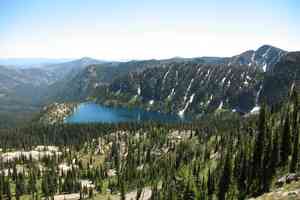
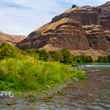

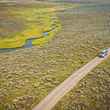
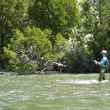


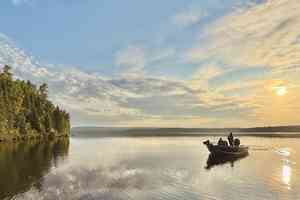
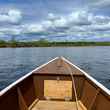



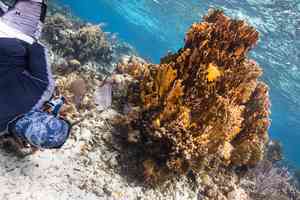
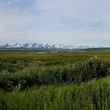

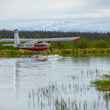





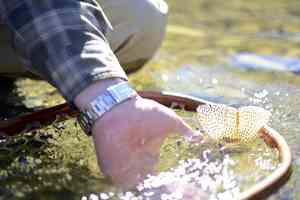


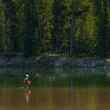


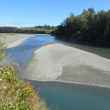
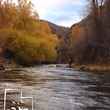
Comments